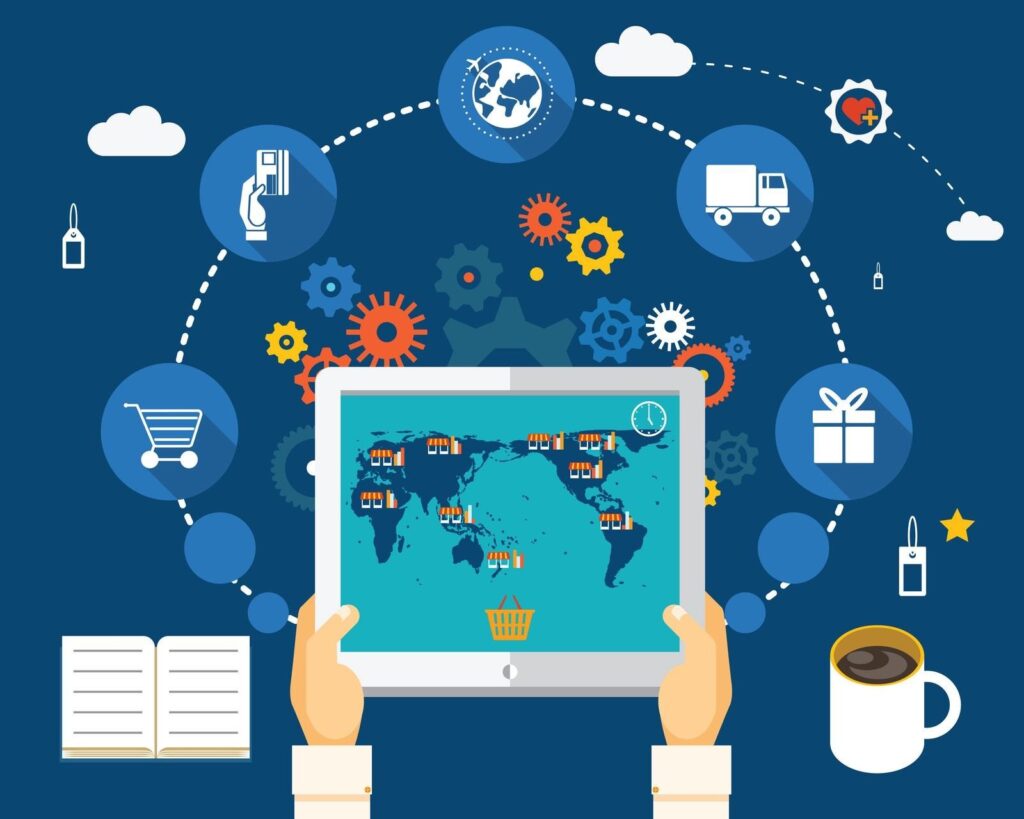Why the Definition of Supply Chain Management Is Changing
Table of Contents
Evolution Of Supply Chain Management
Shipping and logistics industry are experiencing the fastest and the most rapid changes in the already dynamic world economic scenario. It is a scramble for teams to keep pace in the fluid environment of innumerable changes like global climate change, political infighting, and the fluctuating costs associated with 21st century transportation supply chain management.
Adding to the challenges is the story of emerging technology that is a necessity in logistics sector, to get an edge over rivals and for smooth and efficient functioning. At a glance supply chain management (SCM) seems to be a simple idea involving knowledge of what to order and when, and knowledge of when the finished product will get delivered to the buyer.
However, recent upheavals in the shipping world, and global uncertainty surrounding political scenarios, and most recently the Coronavirus pandemic, have thrown global logistics into a new trajectory. A new perspective has brought about a perceptual change in how Supply Chain Management can be accomplished in today’s world of fast changing dynamics.

Consumers Driven Marketplace and Changing Expectations:
“The Amazon Effect” is a new syndrome that has taken over world economy presently. The “Amazon Effect” ensures that consumers have their purchases delivered to them, in as little as one hour in some locations. A delivery can be accomplished in one-two days, even in remote areas. Contrary to this, in the past, orders would take a minimum of 3 days to process, and another 7-10 to be delivered.
However, Amazon, backed with their extensive network of warehouses, multi-level inventory management, and efficient transportation networks, has brought in a revolution in Supply Chain Management. The third-party sellers make up over 80% of sales on the Amazon site. These sellers rely on Amazon’s infrastructure for logistics support. This exhaustive network is vastly supported by advanced analytics, employed to streamline Supply Chain Management.
This advanced analytic support systems are fast making their way into the broader logistics world, and providers around the globe are benefitting from this distribution

Growing Accessibility of AI and Machine Learning
Artificial Intelligence (AI) and machine learning are the most exciting recent developments in the logistics sector. Technology support and AI is set to revolutionize transportation and logistics networks, by bringing in the power of big data. Internet of Things (IOT) made the first inroads into the manufacturing sector.
It is the IOT that powers the automation of all the underlying processes around the manufacture of consumer goods. The automation and the data streams from production facilities are a flood of data resource. AI and machine learning algorithms tap into this data resource and make their power felt here. Advanced analytics engines enable companies to draw actionable insights in near real-time, by parsing all of that data resource.
These actionable insights, offered by advanced analytics engines, allow for quick pivots and shifts in everything, from production capacity to shipping routes, which can thereon be optimized for efficiency, or even to lower fuel costs, all in the go, with immediacy of the hour.

Transportation Technology Is Here Earlier Than Anticipated.
Advanced technology, AI in Transportation sector conjures up grand images of self- driven cars, drones, and all those impressive stuff seen in sci-fi movies. Without doubt these technologies are in development, and all is possible, and not far behind.
However there are other advanced technologies that are fast becoming operational, here and now.Lane alert systems that keep big rigs centered in their lane, preventing crashes in the event of a driver nodding off on a long haul, and other such Driver Safety Technologies are proving to be a boon for the transportation sector.
Predictive braking systems that keep the traffic flowing and shipments moving in the right direction are revolutionizing the Transportation industry. Delivery drone technology is already in the final stages of testing. These drones are set to make one-hour delivery windows a conceivable reality for even the smallest of service providers in urban environments.

Tightening International Regulations
International regulations come with their own impact on logistics industry that is both good, and not-so-good. Rules surrounding working conditions at dock facilities, and in warehouses, are a positive impact on the health and well-being of the workers at those locations.
Regulations that tighten the noose around shipping containers are empowering as they crack down on smuggling operations, and thereby keep supplies and products safe from being tampered with selfish gains.However, these very same restrictions also raise costs for retailers. These cost escalations are then passed on and eventually forced upon the consumers as elevated or inflated prices.
For instance, the enforced use of ELDs, or Electronic Logging Devices, in transportation that is intended to keep drivers’ hours to a safe maximum, are causing the shipments to be delayed mid-journey in the event of the driver getting stranded in the middle of the road, when the ELD forces them to pull over for a rest break. This delay raises costs for retailers.
Rules and regulations are good as they givestructure. But the rigidity and inflexibility of regulations, often leads to unprecedented hindrances.
Evolving S&OP Processes
The evolving consumer expectations dynamics is making demand planning rise to the top of the process pile. Simultaneously product life cycles are shortening. This forces new product life cycle management processes to be implemented in the go, with immediacy. And there is a heightened demand for end-to-end supply chain visibility and transparency.
To manage all this, a specific management process is needed. S&OP is that process. Sales and Operations Planning (S&OP) is the set of processes that enables a company to plan appropriately for upcoming demand spikes, without experiencing a disruption in the flow of goods.
These S&OP processes need a refresh and update as the shift to on-demand production takes place. Real-time data flows, stemming from IoT integration and other Industry 4.0 technologies, empower S&OP processes to become more agile and flexible, in order to keep pace with the fast changing and evolving ecommerce and logistics scenarios.
Changes in Logistics Sector Powered by Emerging Technology
Technology is an integral part of the world today. All Logistics processes are powered by the very same emerging technology. AI and machine learning from the computer science world, have made their impact felt across all sectors. Technology support has taken the Next-generation ERP and Supply Chain Management solutions to the next level, bringing in the power of big data to even the smallest of players in the logistics world.
These technology empowered solutions include support for:
- Innovative PLM systems
- Logistics network management
- IoT integration
- AI-powered advanced analytics
- BI system integration
Integration of this powerful technology into one centralized software solution, powers up the entire logistics network, bringing in increased accuracy, efficiency, safety, time and cost effectiveness, and smooth management. In view of the fast paced changes happening in the current scenario, and in the immediate pipeline, it is imperative for Supply Chain Management to pivot and adapt quickly in order to keep pace.
In the light of globalization of the supply chain, and the ever-improving and evolving integration of Industry 4.0 technologies, supply chain management has become a fully integrated part of the business workflow. A technology powered, automated, and stable and strong supply chain is the need of the hour.
Blog: Why the Definition of Supply Chain Management Is Changing
Powered By 360Presence
Leave a Replay
supply chain management supply chain management supply chain management




